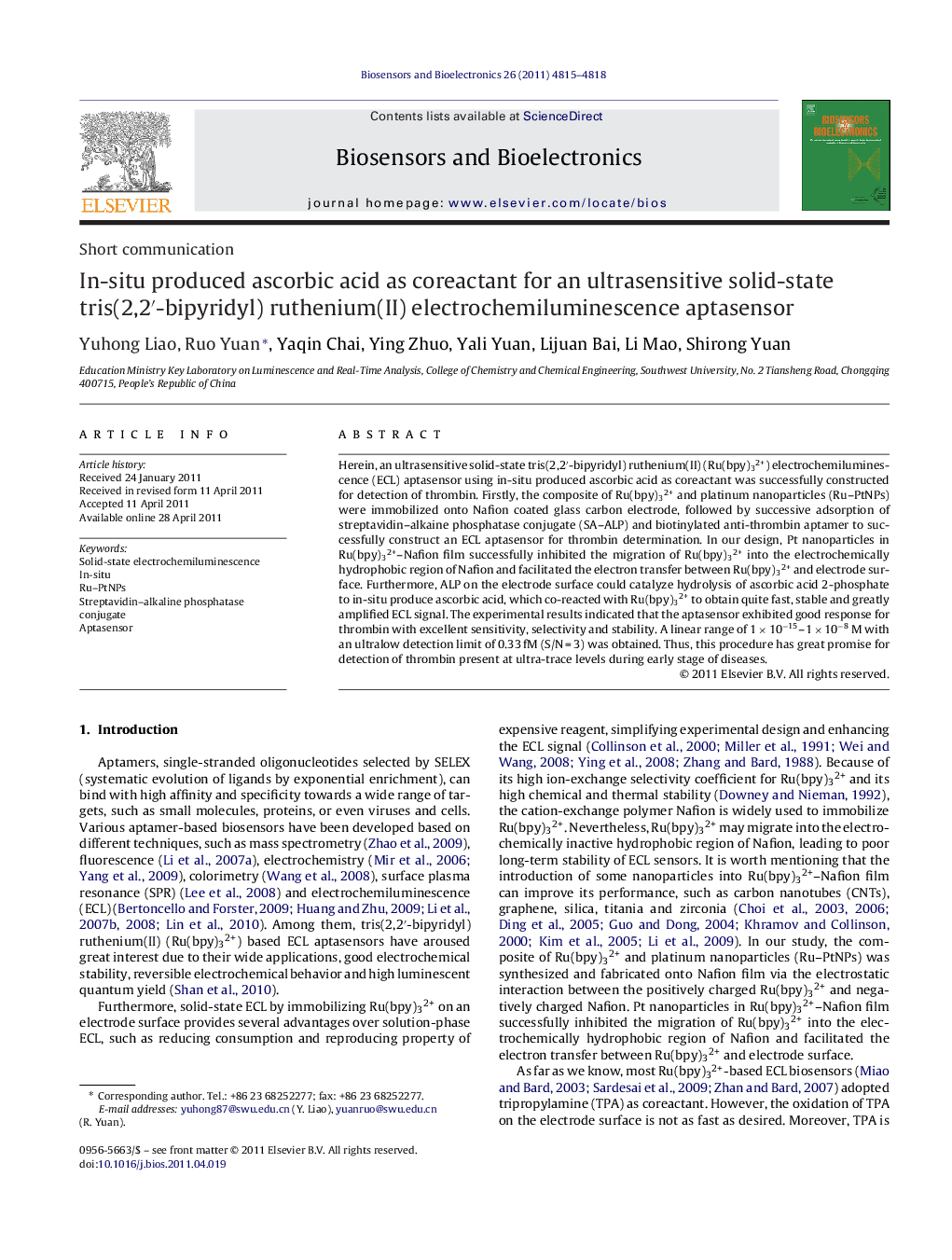| کد مقاله | کد نشریه | سال انتشار | مقاله انگلیسی | نسخه تمام متن |
|---|---|---|---|---|
| 868002 | 909799 | 2011 | 4 صفحه PDF | دانلود رایگان |

Herein, an ultrasensitive solid-state tris(2,2′-bipyridyl) ruthenium(II) (Ru(bpy)32+) electrochemiluminescence (ECL) aptasensor using in-situ produced ascorbic acid as coreactant was successfully constructed for detection of thrombin. Firstly, the composite of Ru(bpy)32+ and platinum nanoparticles (Ru–PtNPs) were immobilized onto Nafion coated glass carbon electrode, followed by successive adsorption of streptavidin–alkaine phosphatase conjugate (SA–ALP) and biotinylated anti-thrombin aptamer to successfully construct an ECL aptasensor for thrombin determination. In our design, Pt nanoparticles in Ru(bpy)32+–Nafion film successfully inhibited the migration of Ru(bpy)32+ into the electrochemically hydrophobic region of Nafion and facilitated the electron transfer between Ru(bpy)32+ and electrode surface. Furthermore, ALP on the electrode surface could catalyze hydrolysis of ascorbic acid 2-phosphate to in-situ produce ascorbic acid, which co-reacted with Ru(bpy)32+ to obtain quite fast, stable and greatly amplified ECL signal. The experimental results indicated that the aptasensor exhibited good response for thrombin with excellent sensitivity, selectivity and stability. A linear range of 1 × 10−15–1 × 10−8 M with an ultralow detection limit of 0.33 fM (S/N = 3) was obtained. Thus, this procedure has great promise for detection of thrombin present at ultra-trace levels during early stage of diseases.
► A solid-state Ru(bpy)32+ electrochemiluminescence aptasensor using in-situ produced ascorbic acid as coreactant was developed for detection of thrombin.
► Alkaline phosphatase catalyzed hydrolysis of ascorbic acid 2-phosphate to in-situ produce ascorbic acid on the electrode surface.
► The in-situ produced ascorbic acid co-reacted with Ru(bpy)32+ to obtain quite fast, stable and greatly-amplified ECL signal.
► A wide linear range of 1 × 10-15 ∼ 1 × 10-8 M and an ultralow detection limit of 0.33 fM was obtained.
Journal: Biosensors and Bioelectronics - Volume 26, Issue 12, 15 August 2011, Pages 4815–4818